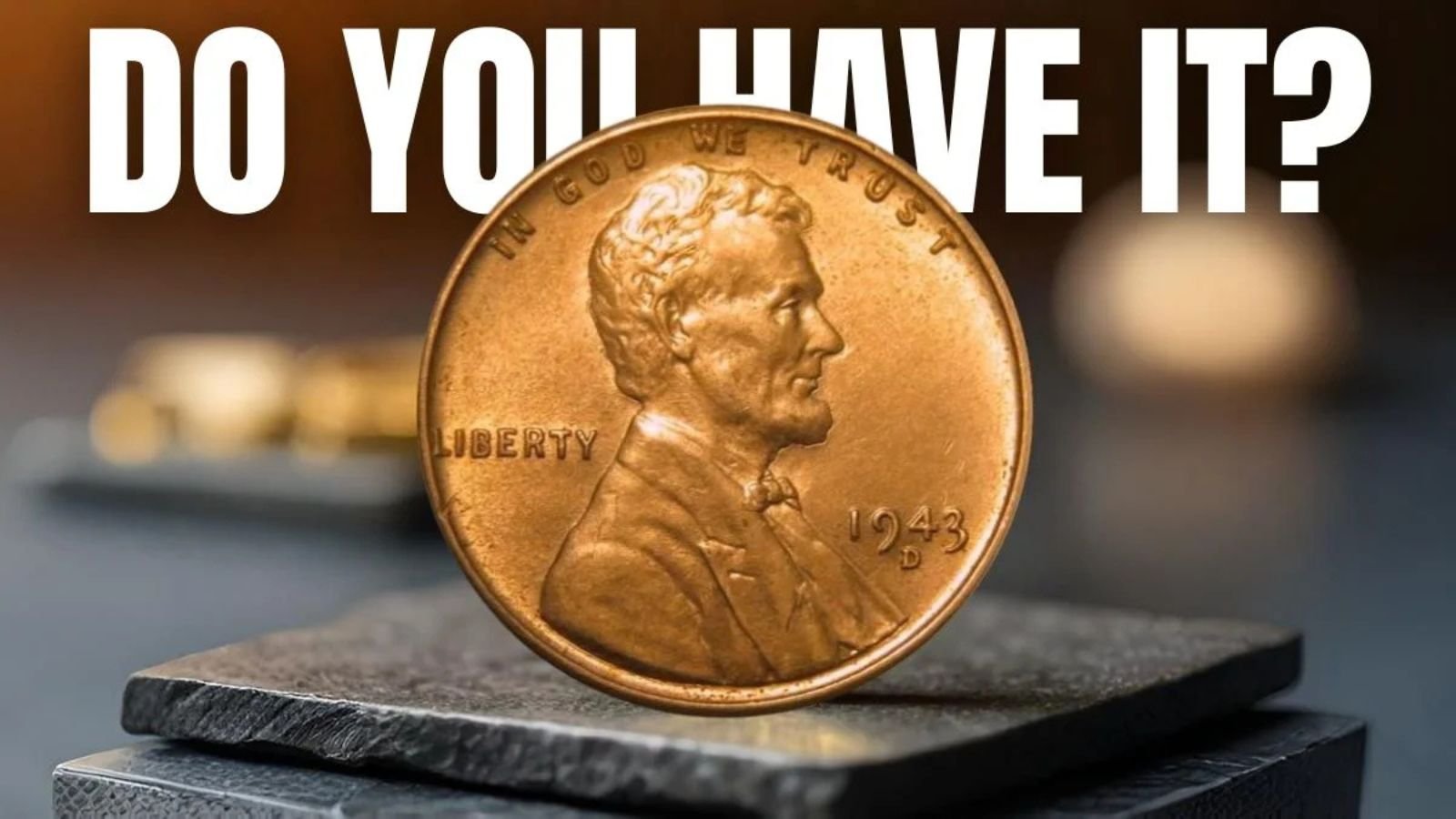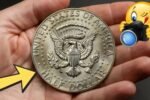Most of us rarely think twice about the coins we use every day. A penny seems so ordinary that it often ends up tossed in a drawer, forgotten in a piggy bank, or rattling around in an old jar. Yet, in the fascinating world of numismatics—the study and collection of coins—even the most common-looking coin can hold extraordinary value. One of the best examples of this is the Lincoln Wheat Penny.
At first glance, the Lincoln Wheat Penny looks like any other one-cent coin. But over the decades, certain rare versions of this coin have shocked the collecting world with their astronomical value. Some examples of the Lincoln Wheat Penny have been auctioned for prices ranging from $144,000 all the way up to $1.7 million. The idea that something worth a single cent could turn into a life-changing fortune is what continues to make this penny so legendary.
This article explores the history of the Lincoln Wheat Penny, the story behind its most valuable versions, why it became a cultural icon, and how ordinary Americans have stumbled upon rare coins worth millions.
Toyota Corolla 2025 Launched: Premium Sedan with 25 kmpl Mileage & Advanced Features
Lincoln Wheat Penny: A Historical Glimpse
The journey of the Lincoln Wheat Penny began in 1909, created to commemorate the 100th birth anniversary of Abraham Lincoln, the 16th president of the United States. This release was historically significant because it marked the first time a real person—rather than a symbolic figure like Lady Liberty—appeared on U.S. coinage.
Designed by sculptor Victor David Brenner, the coin featured a right-facing profile of Abraham Lincoln on the obverse (front). On the reverse side, two wheat stalks framed the words “ONE CENT” and “UNITED STATES OF AMERICA.” These wheat stalks symbolized America’s agricultural heritage, making the coin both patriotic and symbolic. It soon earned the popular nickname “Wheat Penny.”
The Lincoln Wheat Penny remained in circulation from 1909 until 1958, after which the wheat design was replaced with the Lincoln Memorial on the reverse. Though hundreds of millions of these coins were minted, certain variations—caused by minting errors or historical circumstances—became extraordinarily rare and extremely valuable.
The 1943 Bronze Lincoln Wheat Penny – A Historical Accident
Among all the versions of the Lincoln Wheat Penny, none is more famous—or more valuable—than the 1943 bronze penny. Its story begins during World War II, when the United States faced a massive demand for copper, a metal needed to produce ammunition and military supplies.
To conserve copper, the U.S. Mint decided that pennies in 1943 would be struck from zinc-coated steel instead of the traditional bronze alloy. These steel pennies were lighter in color and slightly magnetic, a noticeable change from previous years.
However, in a fascinating twist of fate, a few leftover bronze planchets (the blank metal discs used to make coins) accidentally remained in the minting presses. As a result, a small number of 1943 pennies were struck using bronze instead of steel. This was not intentional—it was a pure minting error.
Experts estimate that only 10 to 15 examples of the 1943 Bronze Lincoln Wheat Penny exist today. Their accidental creation, combined with their extreme rarity, has made them one of the most sought-after coins in American history.
Extreme Rarity – A Coin That Surfaces Once in a Decade
The rarity of the 1943 Bronze Lincoln Wheat Penny is what drives its immense value. These coins are so scarce that they surface at public auctions only once every 10 to 15 years. Most are tucked away in private collections, treasured family heirlooms, or hidden in safes owned by wealthy collectors.
When one does appear at auction, it can cause a bidding frenzy. In recent years, one such coin sold for an incredible $1.7 million, setting a record that stunned collectors worldwide. Considering that its face value was only a single cent, the increase in worth is almost beyond imagination.
Why Is the Lincoln Wheat Penny So Special?
The appeal of the Lincoln Wheat Penny goes beyond its monetary value. There are several reasons why this coin holds such a special place in numismatic culture:
-
Historical Context – The 1943 bronze error reflects the resource shortages and sacrifices of wartime America. Each of these pennies is like a tiny artifact from World War II.
-
Human Error – The fact that the coin’s value stems from an unintentional mistake makes it even more fascinating. Collectors love stories of accidents that created treasures.
-
Connection to Abraham Lincoln – As the first U.S. coin to feature a real person, and one as revered as Lincoln, it carries deep patriotic and emotional significance.
-
Hope of Discovery – The possibility that ordinary people might stumble upon one of these rare pennies in everyday life keeps the excitement alive.
The Lincoln Wheat Penny represents history, chance, and culture all wrapped into a tiny copper disc.
Ordinary People, Extraordinary Finds
One of the most exciting aspects of the Lincoln Wheat Penny is that it hasn’t only been found by expert collectors. There have been several instances where everyday people discovered these coins in the most unexpected places.
Imagine a child dumping out their piggy bank only to find a coin that turns out to be worth hundreds of thousands of dollars. Or an elderly person sorting through a jar of coins collected over decades and realizing they own a 1943 Bronze Lincoln Wheat Penny. These real-life discoveries add to the legend of the coin, inspiring others to check their change or search through old family collections.
This sense of possibility fuels public fascination. People often ask themselves, “Could I have one of these coins hiding somewhere?” That hope and curiosity keep the story of the Lincoln Wheat Penny alive generation after generation.
Do You Have a Rare Lincoln Wheat Penny?
Naturally, the question everyone asks is: “Do I have one of these coins?” The answer is—possibly. The Lincoln Wheat Penny was widely circulated between 1909 and 1958, meaning millions were minted. While most are common and worth only slightly more than their face value, certain years and minting errors can make them valuable.
The rarest of them all is the 1943 Bronze Lincoln Wheat Penny. If you think you might own one, here’s a quick way to check:
-
Test the coin with a magnet. Steel 1943 pennies will stick to a magnet, while bronze ones will not.
-
If it does not stick, you may have something valuable on your hands. At that point, it’s best to consult a professional coin expert or send it for grading to verify authenticity.
Even if you don’t find a 1943 bronze version, other Lincoln Wheat Pennies can also fetch respectable prices depending on mint marks, condition, and historical quirks.
The Lincoln Wheat Penny as a Cultural Icon
Beyond its rarity and value, the Lincoln Wheat Penny has become a cultural symbol in the United States. It reflects both the legacy of Abraham Lincoln and the resilience of the American people during difficult times. The wheat design itself is a nod to the nation’s agricultural roots, symbolizing growth, hard work, and prosperity.
Collectors don’t just see the penny as a piece of currency; they see it as a story preserved in copper and steel. Holding a Lincoln Wheat Penny is like holding a piece of history in your palm—an object that connects you to the past in a tangible way.
Conclusion – A Spark of History Hidden in a Cent
The Lincoln Wheat Penny is far more than just a coin. It is a symbol of history, chance, and cultural pride. From its introduction in 1909 to its rare variations in the 1940s, it has captured the imagination of collectors and ordinary people alike.
The most famous version—the 1943 Bronze Lincoln Wheat Penny—stands as a testament to how even mistakes can create legends. Worth up to $1.7 million, it remains one of the most coveted coins in the world. And yet, what makes it truly special is not just the money, but the story it tells: of wartime America, of human error, and of the enduring respect for Abraham Lincoln.
So, the next time you come across an old jar of coins or dig into a forgotten piggy bank, remember this: within those pennies could lie not just spare change, but a spark of history worth a fortune.
FAQs
Q1. What is the Lincoln Wheat Penny?
The Lincoln Wheat Penny is a U.S. one-cent coin minted between 1909 and 1958. It features Abraham Lincoln on the front and two wheat stalks on the back.
Q2. Why is the 1943 Bronze Lincoln Wheat Penny so valuable?
It was mistakenly struck in bronze during World War II instead of steel, making it extremely rare. Only 10–15 are known to exist.
Q3. How much is a 1943 Bronze Lincoln Wheat Penny worth?
Depending on condition, it can be worth anywhere from $144,000 to as much as $1.7 million.
Q4. Can these rare pennies still be found in circulation?
Yes, although extremely rare, some have been discovered in piggy banks, coin jars, and family collections even in recent times.
Q5. How can I tell if I have a 1943 Bronze Lincoln Penny?
Check if your 1943 penny sticks to a magnet. Steel pennies will stick, while bronze ones will not. If it doesn’t, you may have something very valuable.
Some Important Link
| Download News APP | Click Here |
| WhatsApp Group | Click Here |
| Home Page | Click Here |


